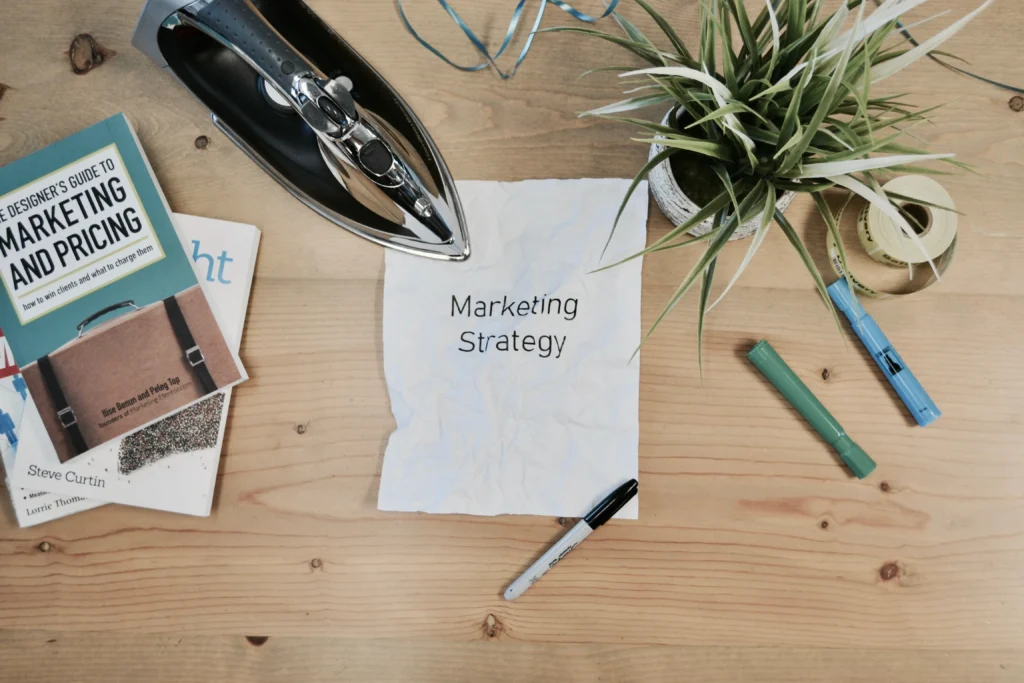Integrating these aspects into your CRM strategy not only streamlines your business processes but also sets a strong foundation for sustained growth and customer satisfaction. A well-chosen CRM system can truly transform your business.
Get started with Shape today!
All-in-one software for marketing, sales, customer service, CRM, and operations.
Share article
5 Simple Formulas to Measure CRM ROI
-
Shape Software
Let’s start with a simple assumption to make this article worth your time: you care about your business. Because if you don’t, there’s really no point in going further.
The bottom line? Whether you’re already using CRM technology, or you’re planning to start using one soon, you’re probably asking yourself one simple question: “Is it worth It?”
Fortunately, there are several equations that can help calculate it the ROI of CRM:
CRM ROI = (Gain from Investment into CRM – Cost of investment) ÷ Cost of Investment
According to the global tech analysis firm Nucleus Research, the answer to this equation is an average of $8.71. That means that, on average, CRM software returns almost $9 for every $1 invested.
What that also means, is that some companies get far better CRM ROI, while others aren’t getting a single dollar back. Of course, how much impact these systems have on your annual revenue will depend upon whether you’re using best practices, and efficient CRM implementation.
What is CRM ROI and how is it calculated?
Put simply, it stands for Customer Relationship Management Return on Investment. It is calculated by taking the net return from your CRM investment (the total financial benefits minus the costs) divided by the cost of the investment, and then multiplying by 100 to get a percentage.

Table of Contents
- 1. How long does it take for a company to see a positive CRM return on investment?
- 2. What are the benefits of CRM?
- 3. No CRM ROI calculator? No problem! These 5 formulas are all you need
- 4. Formula 1 – Increase in conversion rates
- 5. Formula 2 – Increase in revenue per lead
- 6. Formula 3: Time saved
- 7. Formula 4 – Better marketing ROI
- 8. Formula 5 – Rep productivity Gains
How long does it take for a company to see a positive CRM return on investment?
Typically, companies can expect to see a positive return on total investment from a CRM system within 12 to 18 months. However, this timeframe can vary depending on factors such as the size of the company, the complexity of the CRM implementation, implementation costs, and how effectively the system is utilized by employees.
What are the benefits of CRM?
CRM systems are pivotal in shaping business success. They streamline operations and enhance customer engagement, directly impacting your bottom line. Here’s how:
-
1. Enhance customer experience
CRM tools offer a personalized approach to interactions, ensuring every customer feels valued and understood. Shape's mobile-optimized customer portal greatly enhances this process.
-
2. Leverages customer data
Centralizing customer data drives better business decisions and contributes to revenue growth.
-
3. Reduces training costs
Managing customer relations makes training more streamlined, allowing marketing efforts to focus elsewhere.
-
4. Attracts new customers
Identifies and engage potential customers, turning them into new customers through targeted marketing and personalized interactions. This enables you to close deals cost-effectively.
-
5. Boost customer loyalty
Consistent, excellent customer service retains customers, enhancing loyalty.
-
6. Streamline data entry
Automate and organize data entry, freeing up time for your marketing team to focus on crafting relevant brand experiences.
-
7. Improve customer satisfaction
Track and manage every prospect interaction, leading to higher satisfaction rates.
-
8. Integration of CRM modules
Uses various modules to manage different business aspects, from sales pipeline tracking to marketing automation, ensuring cost savings.
-
9. Accelerate sales process
Helps manage the sales process efficiently, from initial phone calls to closing deals.
-
10. Boost revenue increase
Aligns sales estimates with actual performance, leading to increased revenue.
-
11. Manage implementation costs
The long-term benefits like cost savings and revenue growth justify the initial cost of CRM investment.
-
12. Harness marketing automation
Automates repetitive tasks within your marketing team, allowing them to focus on more engaging social media campaigns.
-
13. Target potential customers
Identifies and nurtures potential customers, ensuring marketing strategies are directed at the right audience. Shape's cutting edge AI-driven technology analyzes customer data and forecast conversions.
-
14. Optimize sales pipeline tracking
Manages your sales pipeline to ensure no opportunity is missed and every lead is effectively pursued.
-
15. Real estate-specific benefits
Mortgage CRM software helps manage client relationships, property details, and follow-ups, enhancing overall efficiency.
No CRM ROI calculator? No problem! These 5 formulas are all you need
So what’s the difference between the companies who use nearly 10X their CRM ROI and those that end up sending their money straight down the drain?
The answer to that usually depends on two key factors:
- How well your CRM features support your company’s needs
- Whether your teams actually use the features your CRM provides
Given the variation of formulas, it’s unlikely you’ll find one single CRM ROI calculator fit for all use cases. Fortunately, we’ve broken down the key basic formulas. We’ll show you several metrics that have a direct correlation with the ROI your company can get out of its CRM system, as well as which CRM features can drive that ROI even higher. Right, let’s take a closer look
It is for this reason that a good Mortgage CRM is now a necessity for gaining an edge over the competition. Any old CRM won’t work in this context, one specially equipped to handle borrowers and all the activities they'll engage in is by far the better option. So without further ado, let’s jump into this article on the best Mortgage CRMs to help optimize and grow your business.

CRM ROI Formula 1 – Increase in conversion rates
One of the most crucial metrics driving business revenue is how well leads are converting into buying customers. Even a slight increase in conversion rate by 0.5% can yield thousands of dollars in increased revenue.
While it should be noted that average conversion rates vary across industries, there are two distinct lead conversion processes that your CRM can have a direct impact on: Speed to lead and lead nurturing.
Improve your lead response time
The speed with which sales reps contact their leads after their details are captured is everything.
According to an article published in Forbes and the Harvard Business Review, the chance of qualifying a lead when responding within the first five minutes is 21 times higher than when responding within 30 minutes. Despite that, only 26% of companies manage to respond that quickly.
Want to improve your speed to lead and make it to the upper echelon of leaders in your industry? Here are some of the key CRM features to look for:
Automatic lead distribution
Leads can come in through several sources, such as online forms, external marketing services, and even manual entries from team members. But no matter the source, there has to be a system in place that automatically assigns every incoming lead to the proper handler, whether it’s a sales rep, a loan officer, or an admissions counselor

Source. Shape users can access plug-and-play distribution rules for sales teams of various shapes and sizes. Instantly route incoming leads via Push (Round Robin) or QuickFire Connect to serve up new leads to the team members who can act the quickest.
Inbound call routing
It’s equally important to assign incoming calls to the right rep, to ensure your leads get instant access to the person who can solve their problem and move them one step closer to conversion.

Source. Inbound call routing can be set up directly within Shape according to your departmental, regional, and agent-specific sales strategies. For example, calls can be routed based on the caller’s state, source of the call, currently available agents, and other defining characteristics.
Voicemails
Even if all managers are currently occupied, no lead should be left hanging. A high-ROI CRM will route the call to other free agents, and/or set up a custom voicemail message to reassure clients that they dialed the correct number and will be contacted soon.

Source. Make sure every lead has the option to leave a message in cases where agents are too busy to answer or a lead is reaching out after hours.
Step up your lead nurture with an airtight CRM
Next to speed to lead, robust lead nurturing can also have a massive impact on your conversion rates.
There is no shortage of strategies for improving your lead nurturing systems. Among the most critical and often neglected ones is consistent follow up. Studies show that the majority of prospects say “no” four times before they say “yes”. At the same only a handful of salespeople initiate the fifth contact.
Even if all managers are currently occupied, no lead should be left hanging. A high-ROI CRM will route the call to other free agents, and/or set up a custom voicemail message to reassure clients that they dialed the correct number and will be contacted soon.
Let’s talk about some of the features your CRM should have to empower your reps to consistently follow up on the leads you’re giving them:

Automated drip campaigns
If your software supports drip campaigns, you can automate entire follow up sequences around pre-built emails and SMS templates. No sequence fits all cases though, so make sure your CRM offers customization options that make it easy to determine who receives what message and when.

Source: Shape users can automagically trigger or end a drip campaign by simply updating a lead’s status based on their last convo. It’s that simple.
Unclosed leads pool
One of the most overlooked parts of the lead nurturing process is making sure no lead ever slips through the cracks. If you don’t have a plan for leads that were assigned to a rep but poorly nurtured (or not processed at all), you’re effectively leaving money on the table and killing your ROI. In order to prevent large losses in potential revenue, look for a CRM that provides features for storing, tracking and re-distributing assigned leads that haven’t resulted in a successful transaction.

Outbound voicemails
Outbound voicemails are a powerful technique that allows companies to warm up their leads before the actual call or revitalize old records without direct participation of managers. It can be combined with automated follow-up features or improve your average lead response time when your managers are overloaded with incoming leads and can’t respond personally.

Determining CRM ROI – Lead conversion rate:
Total averageconversion rate
Average increased conversion rate = SUM {Increased conversion rate across all lead sources } / Number of lead sources
Conversion rate By lead source
Number of leads per month from Source 1 * Increased conversion rate for source 1 = Increased number of closed leads per month for source 1
Increased conversion rate resulted from:
- Smart lead routing based on: lead source, agent experience, lead status and location
- Decreased lead response time
- Automated of follow-up and drip campaigns for all leads
- Re-engagement of dated and neglected leads
Example:
The average amount of leads from all sources for Company X is 2,000, with an average conversion rate of 2% for a total number of closed leads per month of 40.
Company X uses a CRM solution with lead nurturing features and the average conversion rate across all sources increases by 0.5%, boosting the number of closed leads per month by 10.
With an average revenue per lead of $500, the company’s monthly revenue grew by $5000. Given the monthly cost of a CRM solution per 5 users is $495, the ROI is around 1010%.
CRM ROI Formula 2 – Increase in revenue per lead
Revenue per lead is directly tied to the overall revenue and there are many ways these software can help push that number higher:
A smart CRM organizes your entire sales databases including new leads and existing customers. With better lead segmentation, reps can offer relevant information and services to the most responsive groups of customers and leads to better match discounting policies, provide new services to existing customers, and get better ROI on every contact in your system.
Improve customer retention levels and NPS through higher quality service. According to studies , lifting customer retention rates by just 5% could increase company profit by 25% to 95%.
A major factor here is how flexible your CRM system is and how closely it can be customized to support industry-specific sales strategies.
For example, Shape users can automatically review new prospects and score leads based on a company’s sales KPIs, or any other specific parameters.
Revenue-boosting features to look for in your customer relationship management system:
Bi-directional Integration with your core systems
Unfortunately, many CRMs do not play well with other systems. That’s especially true for all-in-one systems that claim to do everything from building your website to managing client retention and built-in systems that are added in as an afterthought to your existing management system, for example your Student Integration Systems (SIS) if you’re in the education space or your Loan Origination Systems (LOS) if you’re in the mortgage space.
Shape’s bi-directional integrations ensure that lead communication continues after leads are converted into customers, increasing the lifetime value of every contact in your database.
Integrations with Third-party services
Some services are invaluable in creating deeper connections with leads and customers.For example, BombBomb is a video tool that allows reps to embed personalized videos into any message, dramatically increasing lead and customer engagement. With the right integration, you can weave video functionality directly into any of your sales workflows, such as drip campaigns, automated emails, or even a quick happy birthday message to leads and customers.
Relevant sales scripts and templates
Another way to ensure the highest quality of service across all your organization is to actively use relevant email and text templates to help onboard new reps and ensure that even your less experienced sales agents always know what to say to keep leads engaged.
Simple user permissions and collaboration features
Around experience being transferred from agent to agent without any resolution to their problem. It’s crucial that your system supports a wide range of collaboration tools to make it easy for each type of user to see all the info they need to see, and none of the info they don’t. Now your customers are happy and your reps have everything they need to be able to retain and upsell your contacts.
CRM ROI calculation – Revenue per lead:
Revenue per lead = (Amount of New Revenue Brought By Leads [per quarter] / Number Qualified Leads [per quarter])
New revenue per lead increased with:
Company X spends $99 per employee per month for access to their CRM.
There has been an increase in closed leads by 5 additional deals per month, with an average deal size per lead at just $100, Company X yields 505% ROI on the CRM.
- Higher retention rate
- Increase in new referrals per lead
- Focused customer support and upsell strategy
Revenue per lead increased by $40 for Company X. Previous revenue per lead was $100 and new revenue per lead is $140.
If the average monthly number of leads per employee is 30, then the total revenue by employee is increased by $1200.
If the cost of CRM is $99, the ROI is 1212%.
CRM ROI formula 3 –Time saved
On average, employees waste 55% of their time on administrative tasks—and sales reps are no exclusion.
The good news is these software can automate the majority of your team’s routine actions, potentially saving hours, days, or even weeks that can be better spent on revenue-generating activities like active prospecting.
Here are two core features every CRM should have for effective automation:
Integrations
Integrations are crucial for automating mundane administrative tasks to make sure your reps and admin have more time for their most high impact work. Direct integrations with the tools your reps already use and love keeps them from having to switch between several different applications so they can stay focused and perform all their tasks from one central system.
Triggers
Triggers are the heart of every automation. Based on predefined events, triggers launch a series of actions that lets you automate the communications and productivity aspects behind every workflow.
Calculation – time saved:
The amount of saved hours * $ per hours = $$ saved
OR
The amount of time saved / Time Spent Closing Lead = N more closed leads
Formula 4 – Better marketing ROI
When it comes to marketing ROI in the digital age, true power comes not from the data itself, but from the cohesive data. You can look at Google Analytics graphs and Facebook interactions all day long, but if the numbers aren’t connected to the right business processes in your company, you’ll never be able to actually apply those insights.
For optimal ROI, look for CRMs that provides advanced reporting so that you can connect the dots between lead sources, agent performance, and conversion rates. With the right data in hand, you’ll have everything you need to make informed decisions about your marketing strategies, all in one place.

By analyzing what’s working and what’s not, you can quickly disband faulty marketing efforts and redirect your resources into high-ROI channels. Over 40% of small businesses don’t measure the ROI or effectiveness of their customer acquisition spend online simply because they don’t have the right tools.
Check out our findings on the best CRM for small business to read more.
CRM ROI calculation – Marketing ROI:
ROI = (Sales growth – Marketing Cost) / Marketing cost
Marketing cost = N * Effective marketing campaigns cost + M * Ineffective campaigns cost
Optimize marketing strategies:
Reduce M, increase N
Example:
If your average marketing campaign costs are $5,000 per month and you reduce the amount of ineffective campaigns by 30%, with a CRM cost of $495 for 5 team members, this yields potential ROI returns of 303%
Formula 5 – Rep productivity gains
The process of enhancing sales team performance never ends, but it should always start at the heart of your sales system: your CRM.

CRM ROI calculation – Closed leads per sales rep:
Example:
Choose the right software, Boost Your ROI
Now that you know how many revenue opportunities you can snatch up with the help of modern Customer relationship management, it’s time to put your systems to work to get the best possible return on investment. At the end of the day, simply installing a system and telling your reps to use it won’t cut it.
After years of helping our customers get the most value for their money with Shape, we’ve come to a simple conclusion:
If your CRM doesn’t provide value within the first 2 weeks of its implementation, it’s probably not the right fit. We know how hard it can be to try something new and want to make the process as smooth as possible so you and your team can start seeing more ROI asap.Get started with a free 14-day trial of Shape and see for yourself how the right CRM can bring back every dollar you put into it, multiplied.